No matter how advanced our cities and technology are. Eventually, we get tired of the town’s noise, stress, and crowd and want to be in one of the places to see before you die.
Humans have transformed Earth beyond recovery, but luckily not everything is lost. Beautiful mountains, blue water lakes, magnificent oceans with fabulous islands – our planet has many breathtaking places and awe-inspiring sceneries just waiting for you to discover them.
However, life is short, and the funds are limited, so we have to narrow down the selection. Knowing that you are just another lazy panda, we’ve done it for you!
We’ve picked 41 most amazing places to see in the world; however, “beauty is in the eye of the beholder,” so you may as well have your list of places to see before you die.
01. Antelope Canyon, USA
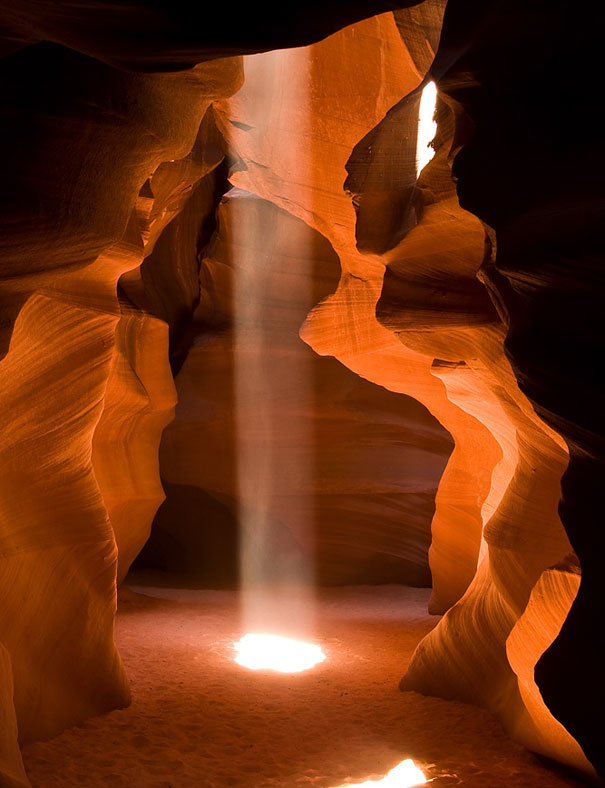 Bamboos for: James Marvin Phelps, Rob Inh00d
Bamboos for: James Marvin Phelps, Rob Inh00d
Antelope Canyon is the most-visited and most-photographed slot canyon in the American Southwest. It is located on Navajo land near Page, Arizona. Antelope Canyon includes two separate, photogenic slot canyon sections, referred to individually as Upper Antelope Canyon or The Crack; and Lower Antelope Canyon or The Corkscrew. The Navajo name for Upper Antelope Canyon is Tsé bighánílíní, which means “the place where water runs through rocks.” Lower Antelope Canyon is Hazdistazí, or “spiral rock arches.”
The formation of Antelope Canyon is because of the erosion of Navajo Sandstone, primarily due to flash flooding and secondarily due to other sub-aerial processes. Rainwater, especially during monsoon season, runs into the extensive basin above the slot canyon sections, picking up speed and sand as it rushes into the narrow passageways. Over time the passageways are eroded, making the corridors deeper and smoothing hard edges in such a way as to form characteristic ‘flowing’ shapes in the rock.
02. The Phi Phi Islands, Thailand
 Bamboos for: Jo@net , Goianobe , CX15
Bamboos for: Jo@net , Goianobe , CX15
The Phi Phi Islands are located in Thailand, between the large island of Phuket and the western Andaman Sea coast of the mainland. Classic beaches, stunning rock formations, and vivid turquoise waters teeming with colorful marine life – it’s a perfect paradise.
03. Santorini, Greece
 Bamboos for: MarcelGermain, Maggie & David
Bamboos for: MarcelGermain, Maggie & David
Santorini is perhaps the most fascinating and talked about island of Greece in the Aegean. Only the name of the island is enough to unfold in mind pleasurable connotations, volcanic landscape, gray and red beaches, dazzling white houses, terraces with panoramic sea views, stunning sunsets, and wild fun. All this and remnants of lost civilizations discovered in the volcanic ash justify the epithets with which visitors identify Santorini and fairly is called magical, indescribable, and astonishing.
04. Maldives Islands
The Maldives lies in two rows of atolls in the Indian Ocean, just across the equator. The country comprises 1,190 coral islands formed around 26 natural ring-like atolls spread over 90,000 square kilometers. These atoll structures are formed upon a sharp ridge rising from the ocean, making way for their secluded uniqueness.
Maldives has deep blue seas, turquoise reefs, white sandy beaches, and palm trees. It is also a place full of character, where its people have long spent their days languishing in the very essence of idyll living. While it is the perfect place to sit on a beach and watch a sunset with a cocktail balanced in your hand, it is also a geographical marvel, knowing that thousands of fish are swimming around the vivid corals just a few feet away from where you sit.
05. Machu Picchu, Peru
 Bamboos for: Tati@ , szeke , magnusvk
Bamboos for: Tati@ , szeke , magnusvk
Machu Picchu stands 2,430 m above sea level in a lovely setting in the middle of a tropical mountain forest. It was probably the most amazing urban creation of the Inca Empire at its height; its giant walls, terraces, and ramps seem as if they have been cut naturally in the continuous rock escarpments. The natural setting on the eastern slopes of the Andes encompasses the upper Amazon basin with its rich diversity of flora and fauna.
The Incas started building the “estate” around AD 1400 but abandoned it as an official site for the Inca rulers a century later at the time of the Spanish Conquest. Although known locally, it was unknown to the outside world before the American historian Hiram Bingham brought it to international attention in 1911.
06. The Great Wall Of China
 Bamboos for: Francisco Diez , topgold
Bamboos for: Francisco Diez , topgold
The Great Wall of China, one of the world’s greatest wonders, became a World Heritage by UNESCO in 1987. Like a gigantic dragon, the Great Wall winds up and down across deserts, grasslands, mountains, and plateaus, stretching approximately 8,851.8 kilometers (5,500 miles) from east to west of China. With more than 2000 years of history, some sections are in ruins or have disappeared. However, it is still one of the most appealing attractions worldwide owing to its architectural grandeur and historical significance.
07. Iceland
 Bamboos for: shchukin, Stuck in Customs
Bamboos for: shchukin, Stuck in Customs
Fire and Ice offers a stunning portrait of this island of extremes, where some of Europe’s most enormous glaciers cozy up to some of the continent’s hottest volcanic springs. Every season has its unique charm, and there are always opportunities to experience new things, discover the beauty, and be mesmerized by the freshness and colors of nature.
08. Bora Bora Island

 Bamboos for: kenyai, jsmoral, Pierre Lesage
Bamboos for: kenyai, jsmoral, Pierre Lesage
Bora Bora emerged from the waters 3 million years ago. Like all the other Polynesian islands, this volcanic island slowly sank into the ocean. It presents particular geological characteristics ranging between high islands and atoll statuses. Island has an unforgettable turquoise lagoon – where a multi-color aquatic fauna (sting & manta rays, sharks, tropical fishes) can be observed by outrigger canoe, boat, or diving explorations. The coral reef includes a string of islets and gorgeous white sand beaches surrounding the main island.
09. The Wave, Arizona, USA

 Bamboos for: Alaskan Dude, DIVA007
Bamboos for: Alaskan Dude, DIVA007
The Wave is a sandstone rock formation located in the United States of America near the Arizona and Utah border on the slopes of the Coyote Buttes, in the Paria Canyon-Vermilion Cliffs Wilderness, on the Colorado Plateau. Nearly 200 million years ago, this region was a sandy desert where massive dunes migrated across the landscape pushed by seasonal winds. The prevailing winds of that ancient Jurassic time can be determined by examining the cross-bedding (layers) in the sandstone. Today, some of the original crossbedded dunes are shaped into dramatic landforms and exposed to erosion from eons of runoff. The spectacular ribbons of various colors, called Liesegang Bands, were formed by ground water’s movement and precipitation of oxidizing materials such as iron and manganese. Thin veins or fins of calcite cut across the sandstone, adding another dimension to the landscape.
10. Petra, Jordan
Petra, the world wonder, is undoubtedly Jordan’s most valuable treasure and greatest tourist attraction. It is a vast, unique city, carved into the sheer rock face by the Nabataeans, an industrious Arab people who settled here more than 2000 years ago, turning it into a critical junction for the silk, spice, and other trade routes that linked China, India, and southern Arabia with Egypt, Syria, Greece, and Rome.
11. The Cave Of Crystals, Naica Mine, Mexico

 Bamboos for: ourfunnyplanet, nicole_denise
Bamboos for: ourfunnyplanet, nicole_denise
The Naica Mine of the Mexican state of Chihuahua is a working mine best known for its extraordinary selenite crystals. The Cave of Crystals (Cueva de los Cristales) is a cave approximately 1,000 feet (300 m) below the surface in the limestone host rock of the mine. The chamber contains giant selenite crystals, some of the largest natural crystals ever found. Hydrothermal fluids emanating from the magma chambers below caused the formation of selenite crystals.
12. Moraine Lake, Canada

 Bamboos for: A tea but no e, T.P Photographie
Bamboos for: A tea but no e, T.P Photographie
Moraine Lake is a glacially-fed lake in Banff National Park, 14 kilometers (8.7 mi) outside the Village of Lake Louise, Alberta, Canada. The lake does not reach its crest until mid to late June. When it is complete, it reflects a distinct shade of blue. The color is due to the refraction of light off the rock flour deposited in the lake continually.
13. Grand Canyon, USA

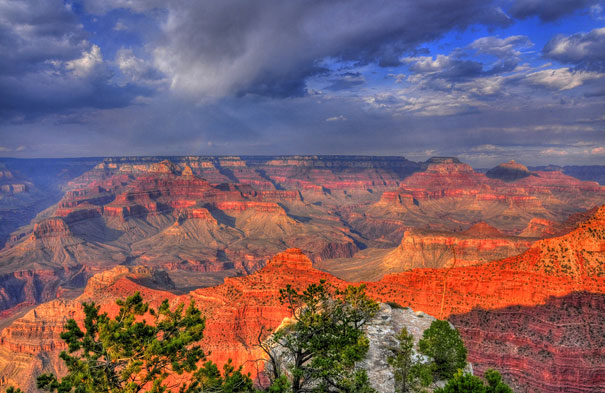 Bamboos for: carbonboy, paigeh
Bamboos for: carbonboy, paigeh
The Grand Canyon is a steep-sided canyon carved by the Colorado River in the United States in Arizona. A powerful and inspiring landscape, the Grand Canyon overwhelms our senses through its immense size; 277 river miles (446km) long, up to 18 miles (29km) wide, and a mile (1.6km) deep. The Colorado River has exposed nearly two billion years of the Earth’s geological history. Its tributaries cut their channels through layer after layer of rock while the Colorado Plateau was uplifted.
14. Berry Head Arch, Canada
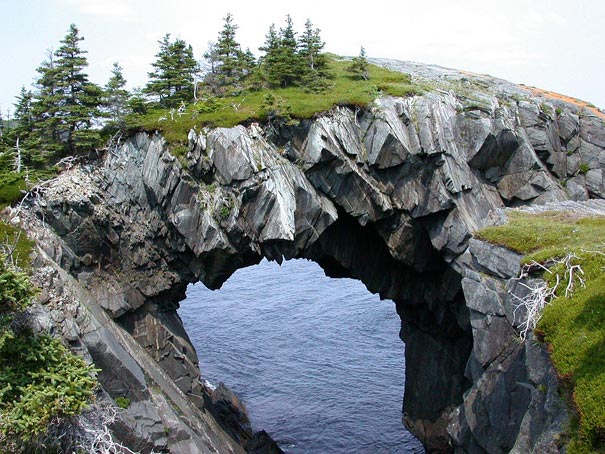 Bamboos for: Rexton
Bamboos for: Rexton
This magnificent sea arch is on the Spurwink Trail along the East Coast Trail. Find the East Coast Trail trailhead at Port Kirwan to get to the arch. From here, it is about a 4.75-mile one-way hike to the arch. The walk is moderate, but extreme caution is required at points where the trail skirts the edge of some relatively high cliffs.
15. Monument Valley, USA

 Bamboos for: Wolfgang Staudt
Bamboos for: Wolfgang Staudt
Monument Valley (Navajo: Tsé Biiʼ Ndzisgaii, meaning valley of the rocks) is a region of the Colorado Plateau that is a cluster of vast sandstone buttes, the most enormous, reaching 1,000 ft (300 m) above the valley floor. Monument Valley provides perhaps the most enduring and definitive images of the American West.
The isolated red mesas and buttes surrounded by an empty, sandy desert have been filmed and photographed countless times for movies, adverts, and holiday brochures. Because of this, the area may seem quite familiar, even on a first visit, but it is soon evident that the natural colors are as bright and deep as those in all the pictures.
The valley is not a valley in the conventional sense but rather a wide flat, sometimes desolate landscape, interrupted by the crumbling formations rising hundreds of feet into the air, the last remnants of the sandstone layers that once covered the entire region.
16. Plitvice, Croatia
The stunning Plitvice Lakes National Park lies in the Lika region of Croatia. Plješevica, Mala Kapela, and Medveđak surround the park, part of the Dinaric Alps. The 16 blue-green Plitvice Lakes, separated by natural travertine dams, are situated on the Plitvice plateau. The lakes are famous for their distinctive colors, ranging from azure to green, grey, or blue. The colors change constantly depending on the quantity of minerals or organisms in the water and the angle of sunlight.
17. Preikestolen, Norway

 Bamboos for: Today is a good day
Bamboos for: Today is a good day
Preikestolen or Prekestolen, also known by the English translations of Preacher’s Pulpit or Pulpit Rock, and by the old local name Hyvlatonnå (“the carpenter-plane’s blade”), is a massive cliff 604 meters (1982 feet) above Lysefjorden, opposite the Kjerag plateau, in Forsand, Ryfylke, Norway. The top of the ridge is approximately 25 by 25 meters (82 by 82 feet) square, almost flat, and is a famous tourist attraction in Norway.
18. Pamukkale, Turkey

 Bamboos for: Le Grand Portage , pic fix , RICCIO , sterol.andro
Bamboos for: Le Grand Portage , pic fix , RICCIO , sterol.andro
Pamukkale, meaning “cotton castle” in Turkish, is a natural site in Denizli Province in southwestern Turkey. The city contains hot springs and travertines, terraces of carbonate minerals left by the flowing water. It is Turkey’s foremost mineral-bath spa because of its natural beauty. Hot calcium-laden waters spring from the earth and cascades over a cliff. As they cool, they form dramatic travertines of hard, brilliantly white calcium that form pools.
19. Socotra Island, Yemen

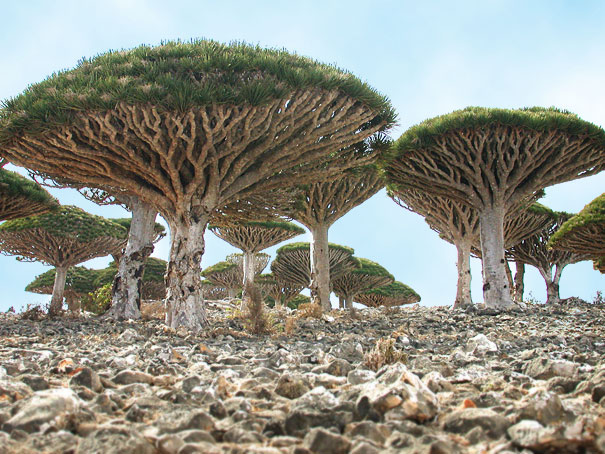 Bamboos for: over-logging , Soqotra (Yemen)
Bamboos for: over-logging , Soqotra (Yemen)
Socotra is one of the most isolated landforms on Earth of continental origin. Socotra is the jewel of biodiversity in the Arabian Sea. The long geological isolation of the Socotra archipelago and its fierce heat and drought have combined to create a unique and spectacular flora. Botanical field surveys led by the Centre for Middle Eastern Plants indicate that 307 out of the 825 (37%) plant species on Socotra are endemic, i.e., found nowhere else on Earth.
20. Carerra Lake
 Bamboos for: Feffef
Bamboos for: Feffef
Shared by Argentina and Chile, the deepest lake in South America is famous for its trout and salmon fishing. The waters of General Carrera Lake are beautiful, a glittering combination of emerald, turquoise, aquamarine, and azure. The marble protrusions stretch along the beachside and are around 300 meters long. The lake’s waters have slowly impacted upon the marble and, in their infinite patience, have created something of enormous, almost bewildering beauty. The rock manifests different tones dependent upon the marble’s natural impurities. Although the white banks, of immense purity, are predominantly blue and pink marble banks. They can also be seen due to other minerals within the rock.
Continue to Part II
Like what you’re reading? Subscribe to our top stories.






















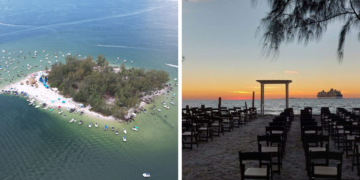




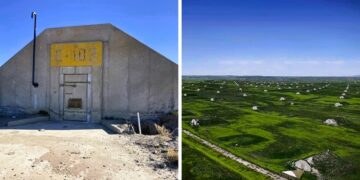









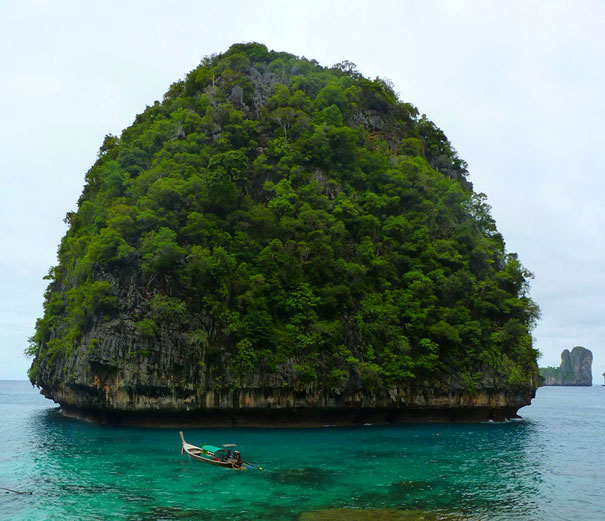

















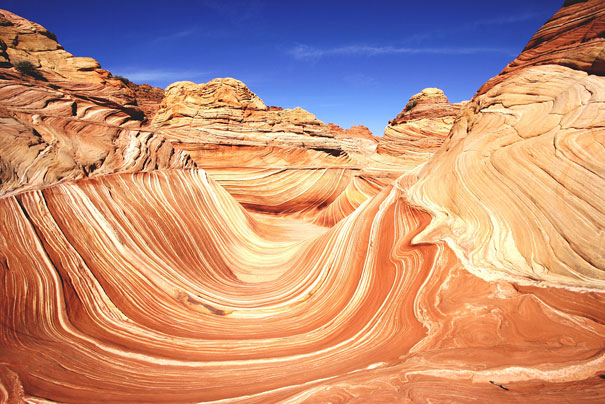








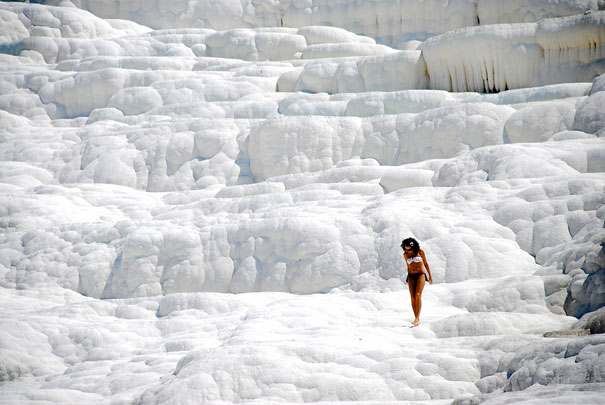













Discussion about this post